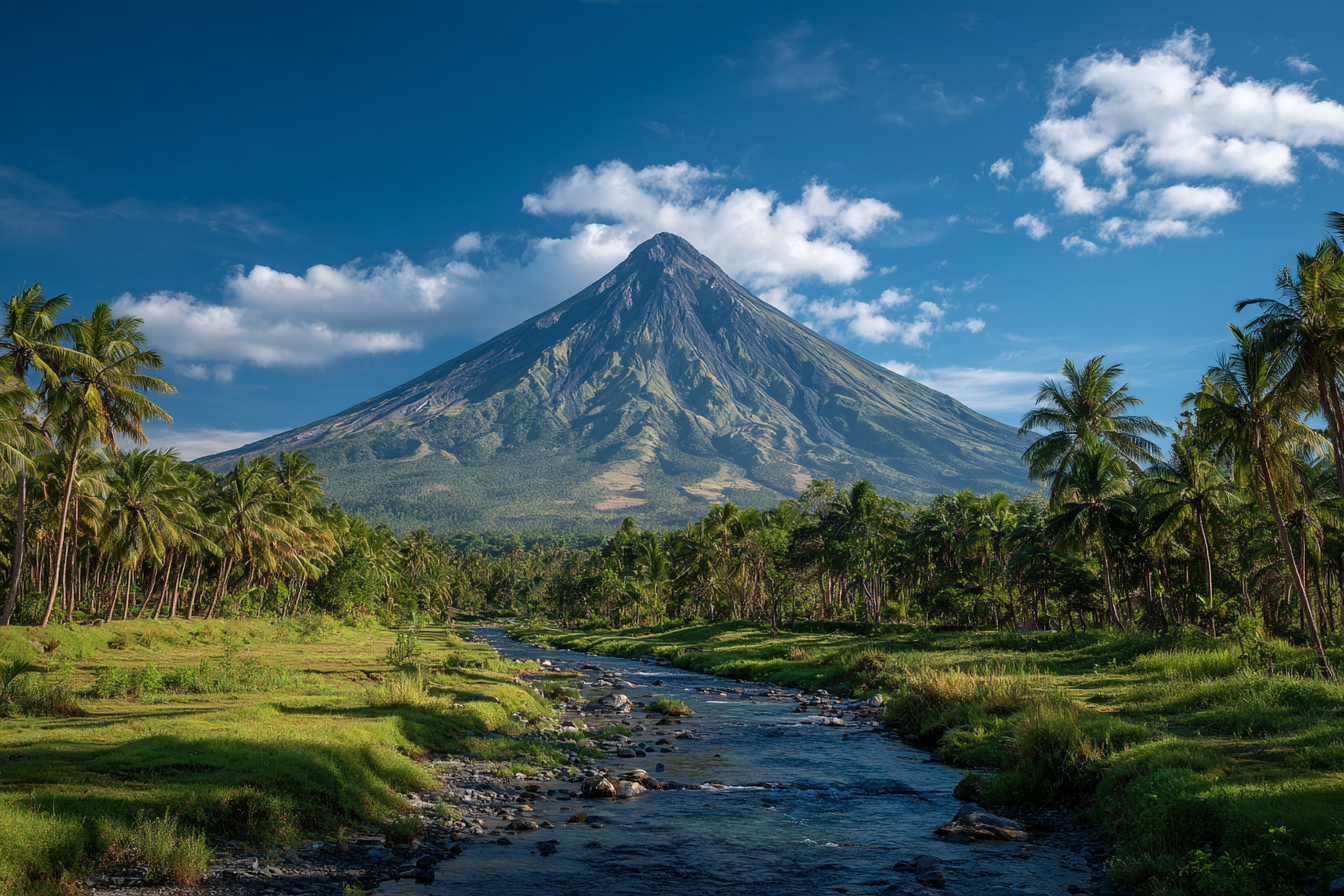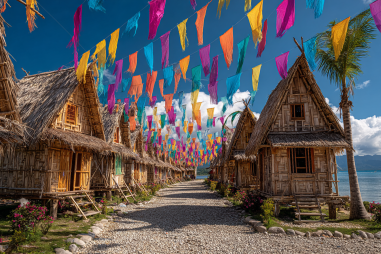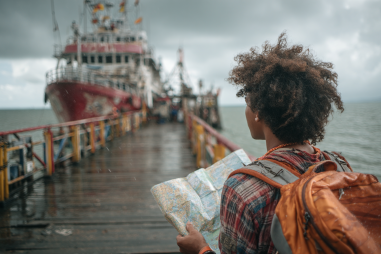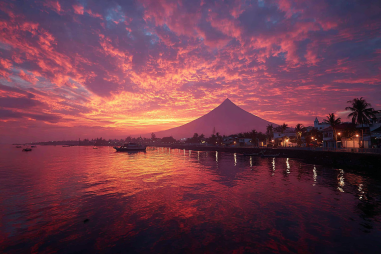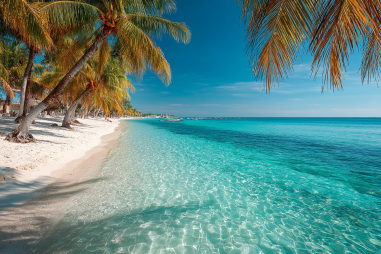Rising majestically in the Bicol region of the Philippines, Mount Mayon is renowned worldwide for its nearly perfect conical shape. This iconic volcano is not only a breathtaking sight but also a vibrant center of local culture, adventure, and natural beauty. Whether you’re a thrill-seeker eager to explore its trails or a traveler yearning to discover the rich heritage of its surrounding communities, Mount Mayon offers an unforgettable experience. This travel guide provides essential tips and insights to help you plan a memorable trip to this spectacular destination.
How to Get to Mount Mayon
Mount Mayon is located in the province of Albay on Luzon Island. The easiest way to reach the volcano depends on where you are coming from, but most travelers fly into Manila, the capital of the Philippines. From Manila, you can take a domestic flight to Legazpi City, the gateway to Mount Mayon, which takes around 1 to 1.5 hours.
Once in Legazpi City, there are several transportation options to get closer to the volcano:
- Jeepneys and Buses: Local jeepneys and buses regularly travel between Legazpi and nearby towns like Daraga, which offer great vantage points for viewing Mayon.
- Tricycles and Motorbikes: For shorter distances and more intimate touring, tricycles and motorbikes can be hired to take you around trailheads and attractions near the volcano.
- Private Cars or Tours: Hiring a private car or joining a guided tour is convenient and provides flexibility, especially for visiting multiple sites around Mayon.
Aside from Legazpi, you can also access Mayon from other nearby towns such as Tabaco and Ligao, though Legazpi remains the central hub.
Best Time and Season to Visit
The best time to visit Mount Mayon is during the dry season, which typically lasts from November to May. During this period, weather conditions are ideal for trekking, sightseeing, and outdoor activities, with less chance of rain obscuring the volcano’s view.
The months between February and April are particularly popular because the weather is warm and sunny, perfect for climbing or enjoying panoramic views. However, this can also be a busier tourist period, so booking accommodations and tours in advance is recommended.
Avoid the rainy season from June to October as heavy rains can cause landslides, muddy trails, and increase the risk of volcanic hazards. It’s also best to stay updated on any political or environmental alerts during your planned visit.
Top Activities and Attractions
Mount Mayon offers a diverse range of activities catering to both adventure enthusiasts and cultural explorers. Here are some of the top things to do around the volcano:
- Hiking and Trekking: While summiting Mayon itself requires a permit and is reserved for experienced climbers due to volcanic activity and terrain, there are numerous trails at the volcano’s base and surrounding hills that offer spectacular views.
- Viewing Decks and Photo Spots: The Cagsawa Ruins Park is a must-visit spot where you can see the old church ruins with Mayon looming behind it—an iconic Philippine photograph. Other viewpoints include the Lignon Hill Nature Park and the Mayon Skyline View Deck.
- Mayon Volcano Natural Park: This protected area lets visitors immerse themselves in lush forests, wildlife, and scenic picnic spots. Nature walks and guided tours are available to explore the park’s flora and fauna.
- ATV and Off-Road Adventures: For a thrill, many companies offer all-terrain vehicle (ATV) tours around the lava trails and rugged landscapes at the volcano’s foothills, providing a unique way to experience the terrain.
- Hot Springs and Waterfalls: Nearby attractions include the Quitinday Greens and the Vera Falls—ideal for a refreshing dip after a day of exploring.
Accommodation Options Nearby
Whether you prefer cozy inns, budget guesthouses, or more upscale resorts, the areas around Mount Mayon offer plenty of choices to suit your needs.
- Legazpi City: This is the main hub and offers modern hotels, from well-known chains to boutique lodgings. Staying here also means access to restaurants, markets, and nightlife.
- Daraga and Guinobatan: These nearby towns have charming bed-and-breakfasts and homestays that provide a quieter local vibe.
- Eco-friendly Lodges: For nature lovers, several eco-resorts operate within proximity to the volcano, offering rustic comforts with sustainable practices and immersive nature experiences.
Booking ahead is highly recommended, especially during peak travel seasons and local festivals like the annual Ibalong Festival.
Safety Tips and Eruption Alerts
Mount Mayon is an active volcano with a history of eruptions, so safety is paramount when visiting. It’s essential to keep these safety tips in mind:
- Check Alert Levels: The Philippine Institute of Volcanology and Seismology (PHIVOLCS) regularly issues alert levels for Mount Mayon. Before planning any activities near the volcano, confirm the current alert level.
- Follow Local Authorities: Always heed warnings and rules set by local officials and guides. Some areas may be off-limits during heightened volcanic activity.
- Travel with Guides: Especially when venturing into the volcano’s trails, hiring a trained local guide ensures not only safety but a richer understanding of the area.
- Prepare for Weather Changes: Mountain weather can change quickly, so bring appropriate clothing and gear.
Being informed and cautious will help you enjoy your visit without unnecessary risks.
Local Culture and Food Near Mount Mayon
The communities around Mount Mayon are rich in Bicolano culture, known for their warm hospitality and unique traditions. Exploring local towns offers the chance to experience colorful festivals, crafts, and cuisine.
The culinary scene here is famous throughout the Philippines for its bold and spicy flavors. Must-try dishes include:
- Bicol Express: A spicy pork stew cooked in coconut milk and chili peppers.
- Laing: Dried taro leaves cooked in coconut milk and chili.
- Pinangat: Similar to laing but wrapped in taro leaves and simmered.
Local markets and street vendors around Legazpi and Daraga are great places to sample these foods. Additionally, the friendly locals are often happy to share stories about the volcano and their traditions, adding a meaningful layer to your visit.
Sample Travel Itineraries
To help you make the most out of your Mount Mayon trip, here are sample itineraries based on different lengths of stay:
2-Day Itinerary
- Day 1: Arrive in Legazpi, visit Cagsawa Ruins and Lignon Hill for sunset views of Mayon.
- Day 2: Take a morning ATV ride around Mayon trails, explore Mayon Volcano Natural Park, and try local dishes before heading back.
4-Day Itinerary
- Day 1: Arrival and city tour of Legazpi, including museums and markets.
- Day 2: Cagsawa Ruins, Lignon Hill, and Mayon Skyline Drive.
- Day 3: Full-day trek around the volcano’s base or ATV adventure; visit Vera Falls in the afternoon.
- Day 4: Day trip to nearby towns like Daraga and Tabaco for cultural immersion, then depart.
These itineraries can be tailored to your interests, whether you prefer more cultural experiences or outdoor adventures.
Final Travel Tips for Your Mount Mayon Adventure
Visiting Mount Mayon is a unique chance to witness one of nature’s most stunning creations. To make your trip smooth and enjoyable, keep these tips in mind:
- Pack light but bring essentials like sturdy footwear, sunscreen, insect repellent, and a hat.
- Respect the environment and local customs; avoid littering and be mindful when taking photos of people and sacred sites.
- Stay connected by purchasing a local SIM card if possible, especially for receiving timely alerts.
- Consider hiring local guides not only for safety but to support the local economy and learn insider knowledge.
With proper planning and an open heart, your visit to Mount Mayon will surely be a highlight of your Philippine adventure.

